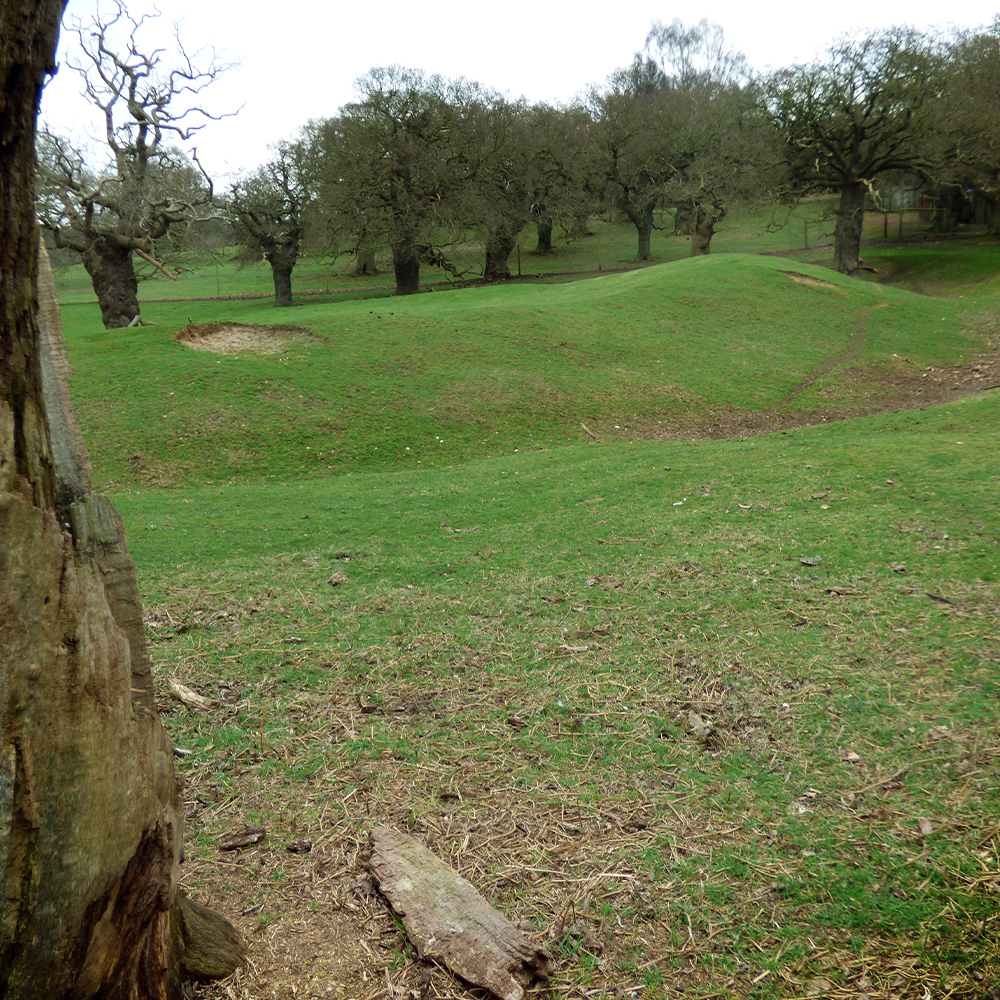Exploring the enigmatic
 We are now finalising investigations for our next Arcane Landscape Trust publication: Staverton – Part 2: Skyscapes and landscapes of the Wuffing Kingdom.
We are now finalising investigations for our next Arcane Landscape Trust publication: Staverton – Part 2: Skyscapes and landscapes of the Wuffing Kingdom.
We end our research with an exploration of the enigmatic earthwork Cumberland’s Mount, for bizarrely there is no definitive consensus on exactly what it is. This vast horseshoe shaped earthwork 92 by 85 metres has various attributions, including it being the remains of a timber Castle called a ring work, a red hill – this being a by product of salt production created between the Iron Age to Roman period, or even that it might have been a temporary camp created by insurgents during the peasants revolt in 1381. Ritually planned landscapes used locations chosen for their mythological and cosmological functions, forming part of a wider ensouled landscape.
A winter solstice sunrise and summer solstice sunset alignment crosses the landscape at Staverton, an ancient oak woodland and royal deer park in Raedwald’s kingdom. Raedwald was famously buried at Sutton Hoo, and his lavish royal hall at Rendlesham lay on the Northern boundary of the East Saxon territory in the 7th C.

Sitting on the edge of Staverton Park, Cumberland’s Mount was sited in marshland and partly submerged by water for half of the year. It would have been approached from Friday Street, an ancient green road that we believe was once a processional routeway.
Along with Burrow Hill at the mouth of the Butley River, also a marshland location and originally an island site, these sites echoed notions of a pre-Christian Nordic cosmos, where a tree, world pillar or post was surrounded by water.
We will keep you posted for the publication date of Staverton Part 2, and in the meantime you can still download Staverton Part 1 for the background on this otherworldly landscape for free here.

Banner image, top: Cumberland’s Mount. The vallum and foss from western outer bank looking in an E.S.E direction. Showing entrance way on the southern side dividing the ditch. Excavated Easter 1910. Gamekeeper and son. Photograph by Mr. H. St. George Gray. JA3/12/2. Source: Suffolk Archives
